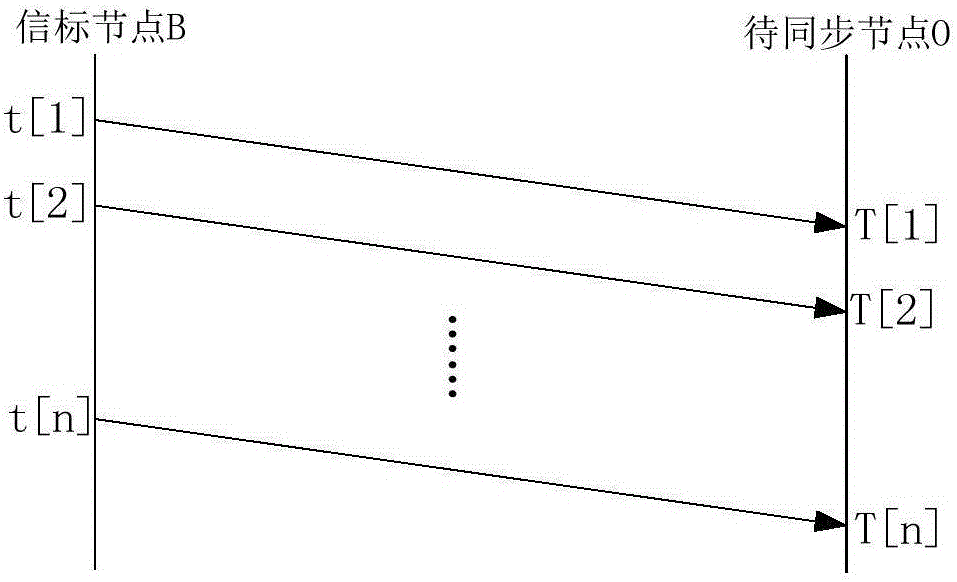Doppler assisted underwater sensor network time sync method
An underwater sensor and network time technology, applied in the direction of synchronization devices, network topology, electrical components, etc., can solve problems that affect synchronization accuracy, increase the deployment cost of sensor networks, and the deployment scheme is easily affected by the underwater environment.
- Summary
- Abstract
- Description
- Claims
- Application Information
AI Technical Summary
Problems solved by technology
Method used
Image
Examples
Embodiment Construction
[0044] The present invention will be described in further detail below in conjunction with the accompanying drawings.
[0045] The purpose of the present invention is to propose a Doppler-assisted time synchronization method. Aiming at the problem that the movement of underwater sensor network nodes affects the accuracy of time synchronization, the Doppler principle is used to calculate the beacon node and waiting time when receiving beacon information. Synchronize the relative speed between nodes, and then calculate the distance change between the beacon node and the node to be synchronized, which can accurately calculate the time it takes for the information to propagate, and better adapt to the complex and changeable underwater environment .
[0046] combine figure 1 Concrete process of the present invention:
[0047] (1) The beacon node continuously broadcasts information packets, which contain the time when the beacon node sends information.
[0048] (2) The node to be...
PUM
 Login to View More
Login to View More Abstract
Description
Claims
Application Information
 Login to View More
Login to View More - Generate Ideas
- Intellectual Property
- Life Sciences
- Materials
- Tech Scout
- Unparalleled Data Quality
- Higher Quality Content
- 60% Fewer Hallucinations
Browse by: Latest US Patents, China's latest patents, Technical Efficacy Thesaurus, Application Domain, Technology Topic, Popular Technical Reports.
© 2025 PatSnap. All rights reserved.Legal|Privacy policy|Modern Slavery Act Transparency Statement|Sitemap|About US| Contact US: help@patsnap.com



